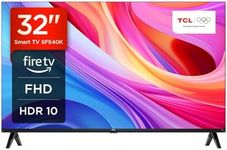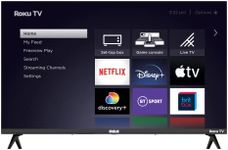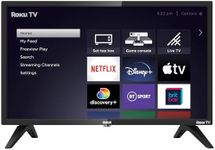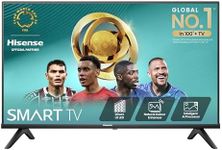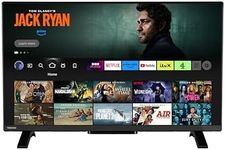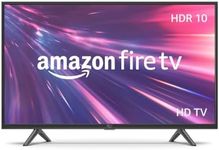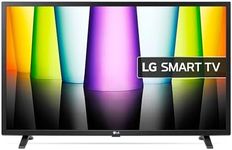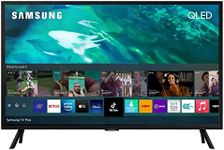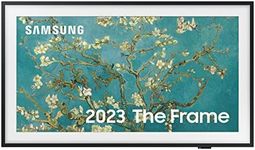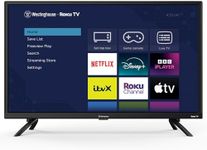Buying Guide for the Best Small Smart Tv
Choosing the right small smart TV can greatly enhance your viewing experience, whether you're looking to fit it in a cozy bedroom, a kitchen, or a small apartment. The key is to understand the various specifications and how they align with your needs. Here are some important specs to consider when selecting a small smart TV.Screen SizeScreen size is measured diagonally from corner to corner and is a crucial factor in determining how well the TV will fit in your space. For small smart TVs, sizes typically range from 24 to 43 inches. If you have a very limited space, a 24-32 inch TV might be ideal. For slightly larger rooms or if you want a more immersive experience, consider a 40-43 inch TV. Your viewing distance should also guide your choice; the closer you sit, the smaller the screen can be.
ResolutionResolution refers to the number of pixels that make up the picture on the screen, with higher resolutions providing sharper and more detailed images. Common resolutions for small smart TVs include HD (720p), Full HD (1080p), and 4K (2160p). If you primarily watch standard TV broadcasts or have a limited budget, HD might suffice. For streaming services, gaming, or if you want a crisper image, Full HD or 4K is preferable. Keep in mind that on smaller screens, the difference between Full HD and 4K might be less noticeable.
Smart TV PlatformThe smart TV platform is the operating system that allows you to access apps and streaming services. Popular platforms include Roku, Android TV, Tizen, and WebOS. Each platform has its own interface and app availability. If you have a preference for certain apps or a specific user interface, choose a TV with a platform that supports those needs. For example, Roku is known for its wide range of apps and user-friendly interface, while Android TV offers robust Google integration.
ConnectivityConnectivity options determine how you can connect other devices to your TV. Important ports include HDMI, USB, and audio outputs. HDMI ports are essential for connecting devices like gaming consoles, Blu-ray players, and streaming devices. USB ports can be used for media playback from external drives. Ensure the TV has enough ports to accommodate all your devices. Additionally, check for Wi-Fi and Bluetooth capabilities for wireless connections.
Sound QualitySound quality can significantly impact your viewing experience. Small smart TVs often have less powerful built-in speakers due to their size. Look for TVs with higher wattage speakers or advanced sound technologies like Dolby Audio for better sound. If sound quality is a priority, consider a TV with an option to connect external speakers or a soundbar for enhanced audio.
Refresh RateThe refresh rate, measured in Hertz (Hz), indicates how many times per second the image on the screen is refreshed. Common refresh rates are 60Hz and 120Hz. A higher refresh rate can result in smoother motion, which is particularly beneficial for watching sports or playing video games. For general TV watching, 60Hz is usually sufficient. If you are a gamer or enjoy fast-paced action movies, a 120Hz refresh rate might be more suitable.
HDR (High Dynamic Range)HDR enhances the contrast and color range of the TV, providing a more realistic and vibrant picture. Not all small smart TVs support HDR, but if you want the best possible picture quality, look for models that do. HDR is especially beneficial for watching movies and shows with high production values. If you primarily watch standard content, HDR might be less critical.
